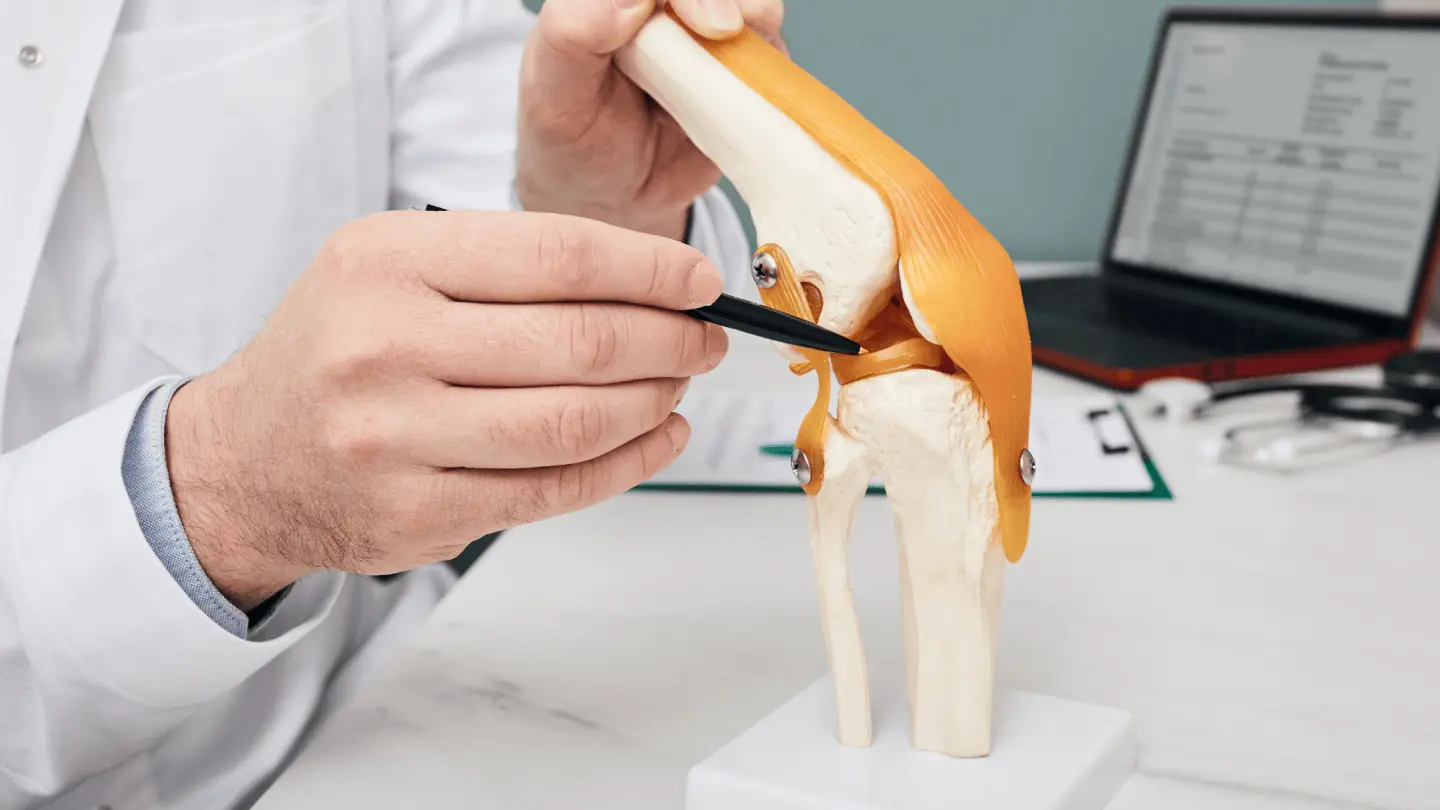
You hear a pop in your knee, and everything feels slightly unstable afterward
It wasn’t a loud crack. More like a click. But something changed instantly. You kept walking. But the knee didn’t feel right. A strange looseness. Not pain—yet. But uncertainty. The joint stopped trusting itself, even before you did.
You bend the knee, and it locks or catches without warning
You squat down. Then try to stand. It hesitates. You feel stuck. The joint doesn’t glide—it jerks. That’s a classic sign. Mechanical. Not muscular. Torn cartilage can float, flap, or wedge. It interrupts movement, not just comfort.
You notice swelling that doesn’t appear right away, but comes later in the day
The knee looks fine at first. Then hours later—swollen. Not hot. Just tight. Fluid builds slowly. You don’t remember falling. But the joint remembers everything. Meniscus tears swell late. Quietly. Without drama.
You feel pain along the inner or outer edge of the knee, not deep inside
It’s not the whole knee. Just a side. Inside or outside. Sharp when you twist. Dull when you rest. The meniscus has zones. Some tear quietly. Others scream with rotation. The location often tells the story before the scan does.
You try stairs, and suddenly one leg does more work than the other
Up is fine. Down hurts. One leg leads. The other hesitates. This isn’t weakness—it’s guarding. Your body protects the tear. Not consciously. But automatically. It shifts weight. Reroutes balance. Avoids angles that once felt natural.
You visit a clinic, and the physical exam brings pain during rotation
They bend your knee. Rotate it gently. You feel that spot again. Not sharp—but familiar. The test confirms suspicion. It doesn’t prove the tear. But it narrows the path. Imaging often follows. But first, hands guide the search.
You get an MRI, and the black and white scan shows a thin line through the cartilage
The radiologist points it out. A line. Maybe small. But clear. That’s the tear. Not always visible in X-ray. Not always large. But it explains the symptoms. Location matters more than size. Even a thin tear can interrupt life.
You try rest and ice, and symptoms ease—but never fully disappear
You stop running. You ice the knee. It helps. Then you return to movement. And the catching returns too. That’s typical. Small tears can calm. But don’t vanish. Especially with certain activities. Relief isn’t always recovery.
You wear a brace, but it only masks the sensation—not the damage
The support helps. You walk better. But deep down, the click remains. The brace contains—not corrects. It gives time. Not healing. Some tears do heal. Others don’t. Braces are bridges. Not destinations.
You consider physical therapy, hoping strength might stabilize what’s torn
You do the exercises. Hamstring curls. Quads. Balance drills. Muscles support the joint. But not always the tear. If the flap still moves, the pain stays. Therapy works best when the tear is stable. Not floating. Not large.
You meet with an orthopedic surgeon, and the options are laid out simply
They say what’s torn can sometimes heal. Or be trimmed. Or removed. Surgery isn’t always needed. But when it is, it’s usually quick. Meniscectomy or repair. Two paths. Based on tear type, age, and activity.
You undergo arthroscopy, and the tools barely leave a mark on your skin
It’s outpatient. Tiny incisions. A camera. Instruments. No cast. Just a wrap. You walk the same day. But slowly. Recovery depends more on healing inside than scars outside. The work is invisible—but real.
You return home, but the real recovery starts with small, precise movements
Elevate. Ice. Bend gently. Straighten slowly. Physical therapy begins quickly. Swelling fades. Strength rebuilds. But trust takes longer. You wait for confidence to return. Not just function.
You begin walking normally again, but always listen for the click that once stopped you
Each step becomes a question. Is it back? Is it gone? Recovery isn’t just physical. It’s mental. You remember the pop. The limp. But also the resilience. You relearn movement without fear.
